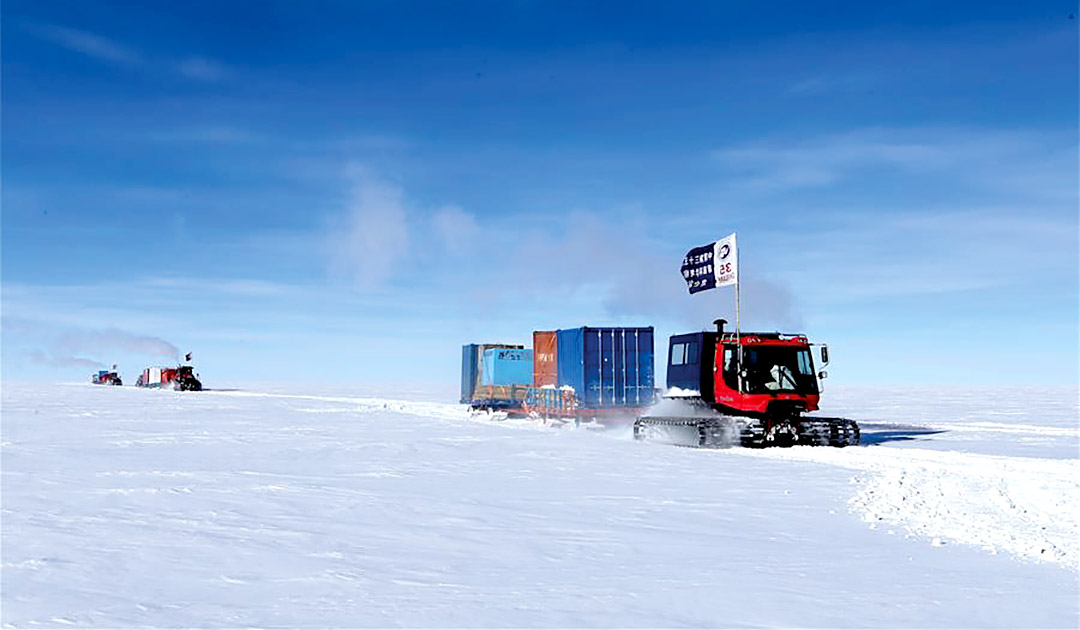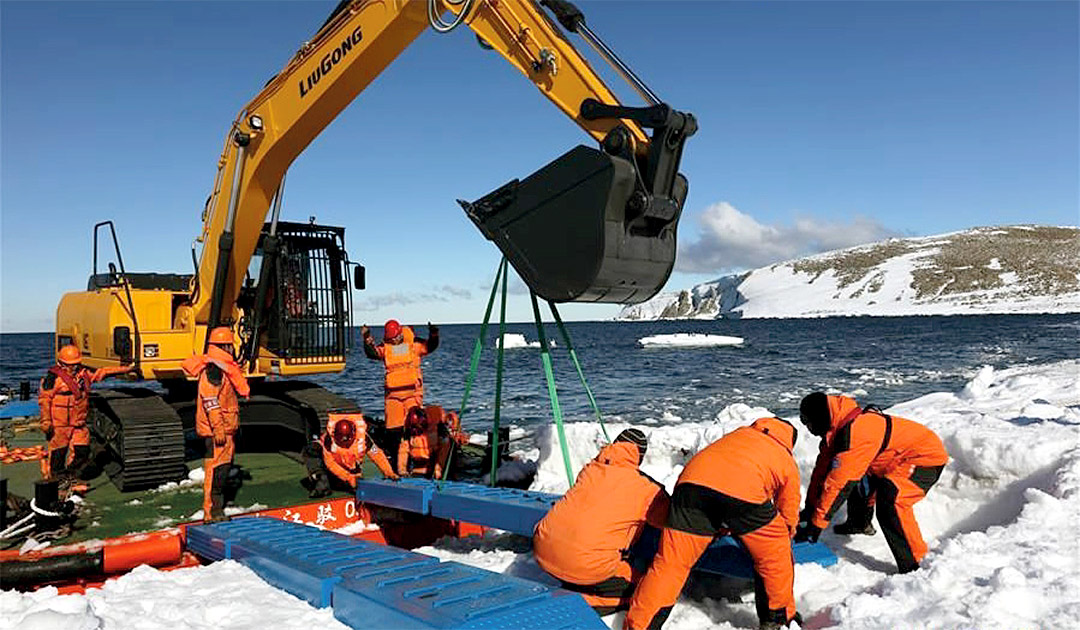
Is the 60-year-old Antarctic Treaty robust enough to stop China? In the 1959 treaty, more than 50 states agreed not to exploit Antarctica economically and not to engage in military or political conflicts on the seventh continent. It is still a rather unique treaty between often hostile nations and was probably only possible because nobody attached much importance to Antarctica at that time. Interests have changed in view of the suspected mineral resources on the continent and the krill and fish stocks along the coasts.
Now Antarctica may be emerging as the latest battleground in the geopolitical rivalry between the United States and China. The two countries are increasingly shifting the boundaries of the treaty, which is supposed to prevent a military presence, in their favor.

Journalist Lucy Craymer writes in an article for the New Zealand news website “Stuff” that new bases and stations are being built and new polar-capable ships are being constructed to gain the upper hand on the continent. China is currently building its fifth base in the region, while the U.S. ordered six new icebreakers to improve capabilities in polar regions.
She further writes that a U.S. Coast Guard spokesman said its new icebreakers were key to helping the U.S. enforce treaties and other laws and providing logistical support.
Australia, a major player in the region, is also planning a new airfield at Davis Station, and New Zealand is investing $344 million to build a new base on Ross Island not far from the U.S. McMurdo Station, their article says. Whereas the amount of investment in New Zealand for a ‘luxury variant’ is highly debated.

As the region becomes increasingly politicized, there is more discussion about whether certain countries – China in particular – are “gently crossing the red lines of the Antarctic Treaty System to advance a political or security agenda,” Marc Lanteigne, associate professor of political science at the University of Tromsø told “Stuff”.
China on course for expansion
During his 2014 visit to Hobart, Australia, Chinese President Xi Jinping outlined for the first time a strategy to “understand, protect and use” Antarctica. “Understand, protect and use” have since emerged as guiding principles for Chinese polar activities.
China owns four Antarctic stations, with the fifth in Terra Nova Bay scheduled to open in 2022. China’s “Kunlun” research station was built at 4,087 meters on the highest point of the Antarctic ice sheet as the center of a Chinese-administered Antarctic Special Area and has never been inspected.
Chinese state media say “Kunlun” is one of the best places on Earth to conduct astronomical research. A first large telescope was installed on the base in April 2012, with two more added in the interim. However, experts fear that the site will be used for military purposes.

Chinese stations in Antarctica
Opening mode
Great Wall 15 February 1985 Summer/Winter
Zhongshan Station 26 February 1989 Summer/Winter
Kunlun Station 27 January 2009 Summer
Taishan Station 08 February 2014 Summer
Terra Nova Bay from 2022 Summer/Winter
The newly built icebreaker “Xuelong 2” has just returned from its alleged research mission from the southern continent. The icebreaker completed the 37th Antarctic expedition and reportedly conducted marine ecosystem and environmental surveys as part of the 36,000-nautical-mile voyage.
Inspections of Antarctic stations present new challenges. Only a few countries with the necessary infrastructure such as icebreakers, aircraft and access to satellites are able to reach bases in other countries.
Heiner Kubny, PolarJournal
More on the subject:





